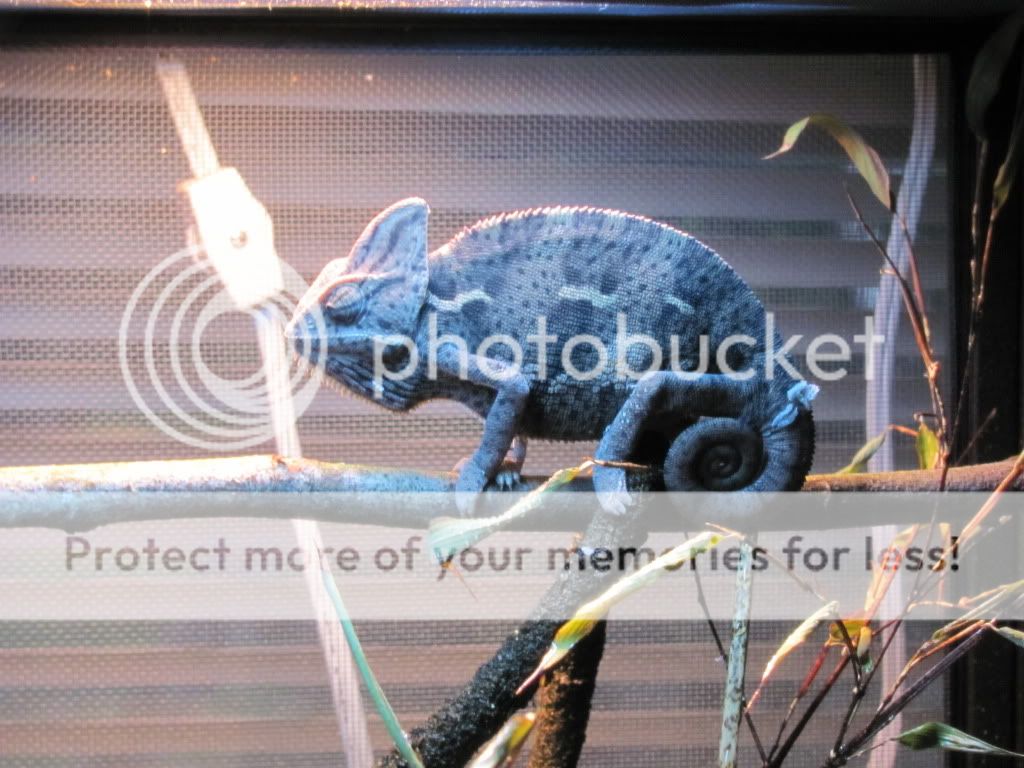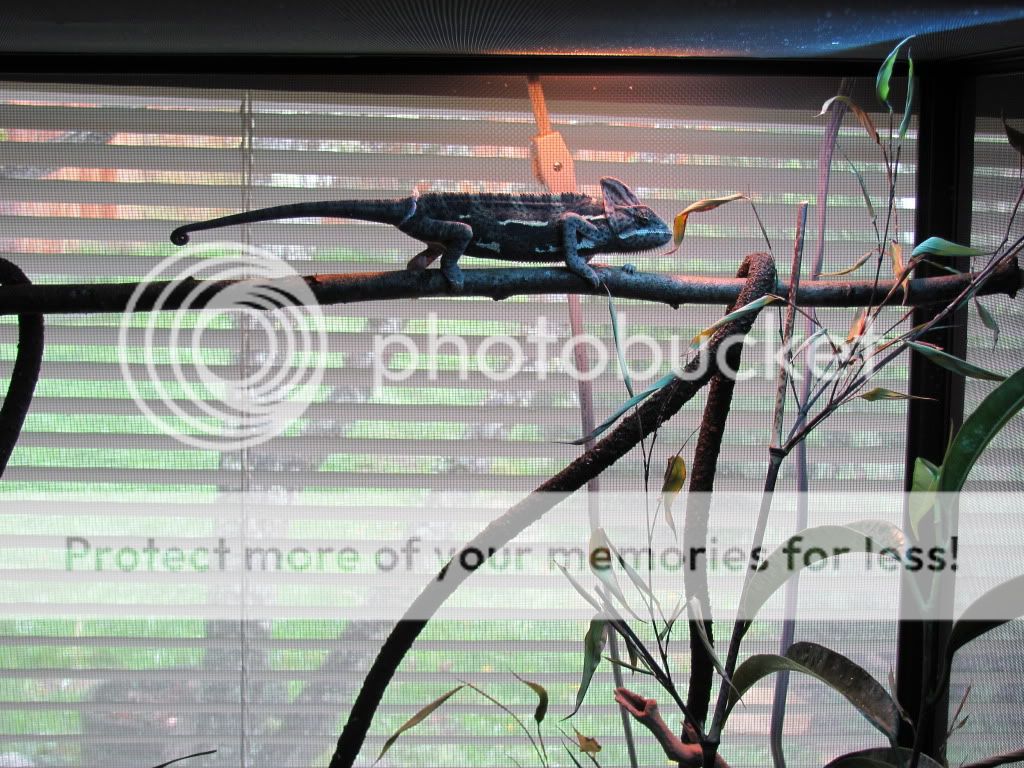Jakama
Member
Whenever my female veiled chameleon is basking, she had a black-and-grey coloration. This is different from her stress coloration, which is a solid dark grey. From what I have observed on this forum, this is not normal. Is it because she is too cold?
Pictures:


Info sheet: Female veiled chameleon, about seven months old. Owned her for two months. I handle her about one time every two weeks. I feed her six large crickets every day. I feed the crickets high-calcium cricket diet from Fluker's and fresh vegetables, usually snap peas. I dust them with Zoomed Repti Calcium without D3, and twice a month with Reptivite Vitamins with D3. I mist her two or three times a day with hot water (comes out lukewarm), and I have a cup of water with a hole in it that I fill up about once a day. I do see her drinking water from this. Fecal matter is dark brown, with a white urate. I have never tested her for parasites. She received a burn on her left side on the second day we got her, but the situation that caused this has been remedied- I moved the lamp.
Cage is about 24x24x36 inches, wire mesh. During the day, I use a 72W house lamp and a 15W UVB tube lamp (33% UVA, 10% UVB). At night it gets pretty cold, so I use a space heater to keep the temperature at about 60 degrees. I switch it to daytime lighting at around 8:00 AM, and switch it to nighttime lighting at around 8:00 PM. I am using two live ficus in my enclosure, as well as a climbing vine, a branch from a peach tree, a large piece of driftwood, and a piece of bamboo with numerous shoots. I keep the temperature in the enclosure between 70 and 85 degrees Fahrenheit, and I try and keep the humidity at around 60%. The temperature of her basking spot is in the low 80s. The table that the enclosure is resting on is about three feet off of the floor. I keep her enclosure in my room, and people do tend to walk around this room several times a day. This provides the advantage of being able to keep an eye on her throughout the day. Her enclosure is next to a window, so she gets plenty of natural light during the day in addition to her two normal lights. This window is always closed, but I keep the blinds open. The sun never shines directly through this window. I am located in Sonoma County in California. I live about an hour north of San Francisco.
Pictures:


Info sheet: Female veiled chameleon, about seven months old. Owned her for two months. I handle her about one time every two weeks. I feed her six large crickets every day. I feed the crickets high-calcium cricket diet from Fluker's and fresh vegetables, usually snap peas. I dust them with Zoomed Repti Calcium without D3, and twice a month with Reptivite Vitamins with D3. I mist her two or three times a day with hot water (comes out lukewarm), and I have a cup of water with a hole in it that I fill up about once a day. I do see her drinking water from this. Fecal matter is dark brown, with a white urate. I have never tested her for parasites. She received a burn on her left side on the second day we got her, but the situation that caused this has been remedied- I moved the lamp.
Cage is about 24x24x36 inches, wire mesh. During the day, I use a 72W house lamp and a 15W UVB tube lamp (33% UVA, 10% UVB). At night it gets pretty cold, so I use a space heater to keep the temperature at about 60 degrees. I switch it to daytime lighting at around 8:00 AM, and switch it to nighttime lighting at around 8:00 PM. I am using two live ficus in my enclosure, as well as a climbing vine, a branch from a peach tree, a large piece of driftwood, and a piece of bamboo with numerous shoots. I keep the temperature in the enclosure between 70 and 85 degrees Fahrenheit, and I try and keep the humidity at around 60%. The temperature of her basking spot is in the low 80s. The table that the enclosure is resting on is about three feet off of the floor. I keep her enclosure in my room, and people do tend to walk around this room several times a day. This provides the advantage of being able to keep an eye on her throughout the day. Her enclosure is next to a window, so she gets plenty of natural light during the day in addition to her two normal lights. This window is always closed, but I keep the blinds open. The sun never shines directly through this window. I am located in Sonoma County in California. I live about an hour north of San Francisco.





